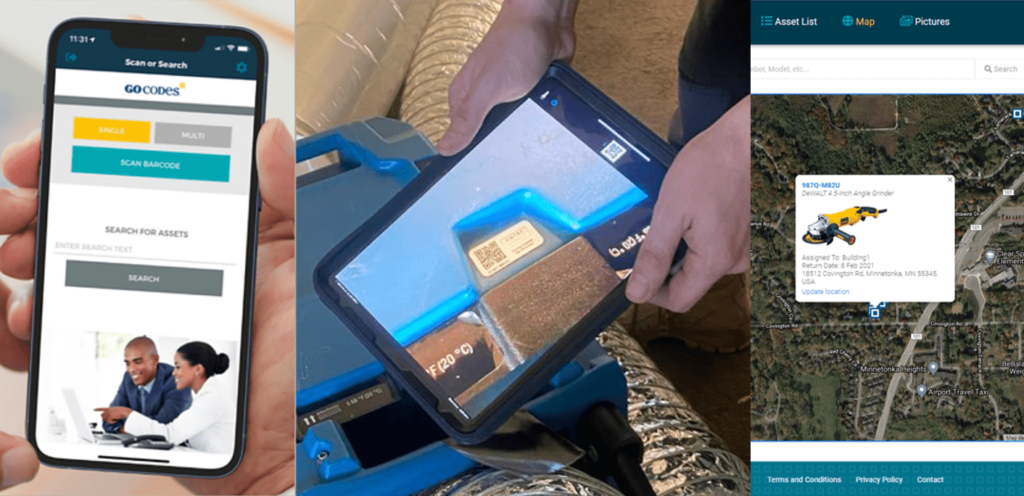Key Takeaways
- If you don’t have the latest piece of technology, you’re not aware of why people rent equipment
- Not knowing your total cost of ownership eats into your profits
- Not having a website with software or online bookings leads to missed opportunities
Whether you’re a seasoned equipment rental business owner or new to the industry, the same things can negatively affect your profitability and client satisfaction.
In this article, we’ll cover seven typical mistakes that equipment rental businesses often make and offer practical solutions to avoid them.
By understanding and addressing these issues, you can have a more successful business and thrive in this highly competitive market.
In this article...
Ignoring Market Trends
Ignoring or not adapting to changing market demands quickly enough is a common mistake made by equipment rental businesses.
Admittedly, this is not entirely their fault, as market trends can shift quickly and unpredictably, making it challenging to stay on top of them.
Regardless, the consequences of not following equipment rental demand changes in your target market can lead to:
- offering outdated models clients no longer want,
- buying new equipment no one needs,
- losing business to competitors.
To avoid these issues and stay competitive, consider what clients want to get from renting equipment.
You can see the main reasons below.

We highlighted one of the reasons, the opportunity to use the latest technology. It ranks high among these compelling advantages of renting equipment.
By choosing to rent instead of own, contractors can ensure they’re working with the best technology available without the need for costly investments or long-term commitments.
Therefore, failing to regularly update your rental fleet with the latest models—and phasing out outdated, rarely rented equipment—can hinder your competitiveness.
Other actions you can take to stay aligned with current market trends include:
- surveying clients to understand their evolving needs and preferences,
- analyzing the equipment offerings and strategies of your competitors,
- utilizing technology for inventory management, data analysis, and market research.
Overall, staying proactive in updating your fleet and monitoring changes in demand can help ensure your business remains competitive and responsive to market changes.
Overlooking Total Cost of Ownership
Ignoring the total cost of ownership (TCO) can result in underestimating the true expenses associated with owning rental equipment, leading to poor purchasing decisions or unprofitable pricing strategies.
Naturally, this mistake is most prevalent among new business owners.
They tend to focus only on the initial cost of equipment without accounting for the other ownership costs they’ll incur throughout the equipment’s life cycle, such as:
- maintenance, repair, and spare parts costs,
- storage and transportation costs,
- depreciation, tax, and insurance costs.
If these expenses are not considered when investing in new equipment for rent and setting prices, it can cut into your profitability.
So, what can you do to avoid miscalculating your equipment’s TCO?
If your rental business is already up and running, leverage the equipment and accounting data you have.
Or even better, couple that with other available tools like data analytics software, online research, and professional consultants.
You can even take advantage of free TCO calculators offered by many equipment manufacturers, such as the Volvo CE TCO calculator for excavators.

Such tools can help you gain a comprehensive understanding of associated ownership costs and set competitive rental rates.
In addition to thorough TCO analysis and budgeting, ensure that:
- you track ongoing equipment expenses,
- you look for cost-saving opportunities,
- you consider the equipment’s depreciation schedule when planning replacements and resale values.
Considering all ownership costs, accurately calculating them, and tracking ongoing expenses can prevent underestimating the true cost of your rental equipment.
Not Tracking Your Rental Equipment
Another common mistake equipment rental businesses make is not tracking the location and usage of their rental equipment.
And this mistake leads to:
- lost or stolen assets,
- reduced utilization rates, and
- increased operational costs.
Conversely, when your rental equipment is equipped with GPS trackers, you know where the equipment is at any moment, how it’s being used, and by whom.
Therefore, you should consider implementing a GPS tracking system for your rental assets, like the one offered by our equipment rental tracking software, GoCodes Asset Tracking.

When GPS trackers are attached to your equipment, you can track their movements in real-time across the globe.
This allows you to:
- easily locate misplaced or stolen equipment,
- improve equipment utilization rates through better scheduling and quicker response to changes,
- reduce operational costs (lower insurance rates, optimized transport routes).
Moreover, GoCodes Asset Tracking’ GPS trackers and tracking software allow you to set up an invisible security perimeter or geofence around any area you designate.

That way, you’ll receive automatic alerts if a piece of equipment leaves the approved area.
For instance, if equipment is stolen from your storage yard or client’s jobsite, you can immediately alert the authorities and help them in recovering it.
Additionally, GPS trackers and the geofencing feature enable you to monitor whether your client is using the rented equipment (location, operating hours) as agreed.
All in all, the mistake of not tracking your rental equipment can be easily remedied by implementing a GPS tracking system.
Neglecting Regular Equipment Maintenance
Since equipment is the primary source of income for your business, failing to properly maintain it is a mistake with potentially grave consequences.
More specifically, poorly maintained equipment can lead to:
- more frequent breakdowns
- safety hazards
- increased repair costs
- reduced equipment lifespan
However, the consequences don’t stop there, but extend to your clients potentially experiencing costly project delays and definitely feeling dissatisfied, resulting in reputational damage.
To avoid this, you should:
- establish a preventive maintenance plan,
- set up the schedule for its implementation
- track maintenance to stay on top of it
When using equipment management software, you can do all of that in one centralized dashboard, where each item has its own info page with relevant maintenance data.
Here’s how this page looks in GoCodes Asset Tracking.

This enables you and your staff to easily access maintenance-relevant info, from when the equipment was last serviced to when it should be serviced next, along with historical data on maintenance and repairs.
You can also view whether the equipment is still under warranty and how far along it is in its depreciation cycle, both of which inform your repair-or-replace decisions.

From there, you can use GoCodes Asset Tracking’ maintenance tracking features to:
- schedule preventive maintenance,
- assign scheduled servicing tasks to specific technicians, and
- set up automated alerts notifying them of upcoming maintenance.

These features enable you to ensure that all rental equipment is well-maintained, thereby minimizing breakdowns and related consequences.
So use them and maximize your rental equipment’s availability, utilization rate, and profitability.
Not Updating Your Equipment Inventory
Keeping outdated inventory records can lead to inefficiencies, such as double bookings, unavailability of equipment, and poor customer service.
These issues arise when equipment availability is not accurately tracked, resulting in items being mistakenly listed as available (leading to double bookings) or unavailable (leading to missed rental opportunities).
Such errors primarily stem from manual, non-automated data entry processes.
To prevent these issues, you need a system that will automate the inventory updating process, thus minimizing mistakes and lag times.
A simple and very affordable way to do so is to tag all your rental equipment with trackers. For that, we recommend durable QR code labels.

With such tags, your employees can simply scan the QR code with their smartphone or tablet to record when a piece of equipment is rented (checked out) and when it’s returned (checked in).
That way, you get a comprehensive, real-time view of the current status of your rental equipment.

We should note that QR code tags are also an excellent way to track equipment attachments and accessories, tools, spare parts, and other small inventory used in your day-to-day operations.
More specifically, GoCodes Asset Tracking QR codes are GPS enabled, meaning that every time someone scans the QR tag, the software will automatically capture its location.

This enables you to track all inventory items whose value or size makes GPS trackers too expensive or impractical to use.
Lastly, note that the central database of all QR-tagged assets can typically be integrated with the online booking system on your website through an API key.
This ensures that equipment availability is automatically updated, thereby avoiding client dissatisfaction and lost business opportunities.
Underestimating the Importance of Building an Online Presence
Failing to build an online presence for your rental business can limit its visibility and growth.
Today, the vast majority of your potential clients will first look for rental options in their area on the Internet.
That’s why having a clear and user-friendly website optimized for local searches is a must.
Beyond that, consider using rental software with an online booking system that integrates with your website, so eager customers can book equipment right on the spot.
Here’s an example of one such solution.

Such software tools enable clients to browse your offerings and book equipment with maximum convenience similar to online shopping experiences.
Needless to say, online booking works 24/7, allowing your clients to reserve rentals at any time regardless of your working hours.
This again underlines the importance of keeping your equipment inventory updated.
In addition to having a good website with easy online booking, you can improve your online visibility by producing content on your website optimized for search engines (SEO).
That will help your website rank higher in search results, so more people see it.
Failing to Provide Good Customer Service
Taking customer service for granted and not actively improving it is another common mistake that can result in lost clients and a damaged reputation.
Among other things, substandard customer service happens when:
- your rental terms are inflexible,
- your staff is impolite or not responsive to client inquiries,
- your business does not provide value-added services like equipment usage training and delivery.
If such practices are not addressed, you’re risking more than client dissatisfaction and a loss of repeat business.
This can result in negative online reviews, bad word-of-mouth among contractors, and a tarnished reputation, making it difficult to attract new clients.
So, what can you do to prevent this?
Here’s an overview of the key aspects to consider when aiming for high-quality customer service in the equipment rental sector.

The listed aspects reflect the key areas you can focus on to enhance your business’s customer service and reputation.
Naturally, this includes training your staff and giving them the right (software) tools to do their job efficiently and have more time to focus on building client relationships.
Long story short, by prioritizing excellent customer service, you can encourage repeat clients, positive reviews, and word-of-mouth referrals, which are crucial for growing your rental business.
Conclusion
So, it’s clear that taking proactive steps to avoid the typical mistakes outlined in this article can significantly improve your equipment rental business’s success.
By staying attuned to market trends, accurately calculating costs, maintaining up-to-date inventory, and delivering exceptional customer service, you can enhance client satisfaction, boost profitability, and foster long-term growth in this competitive market.





